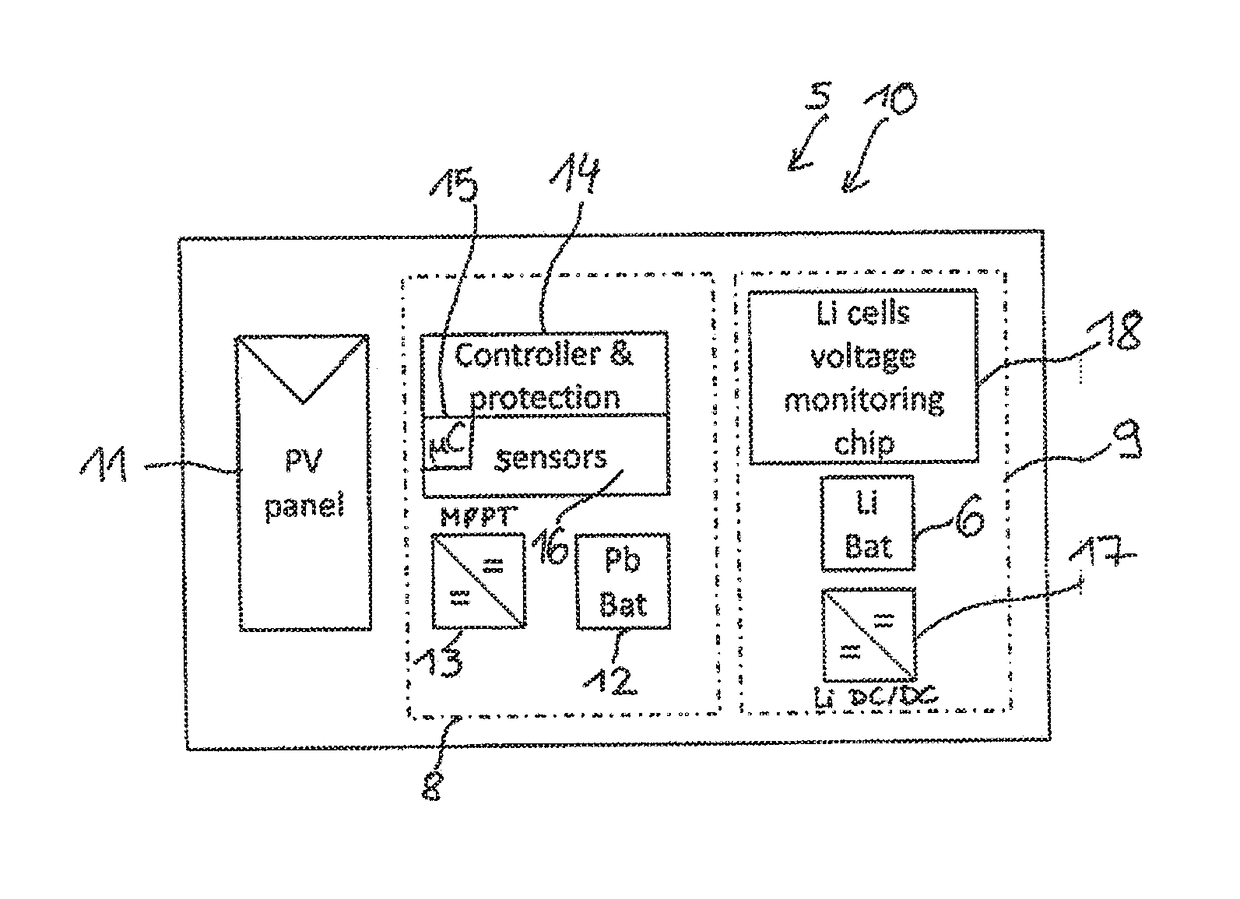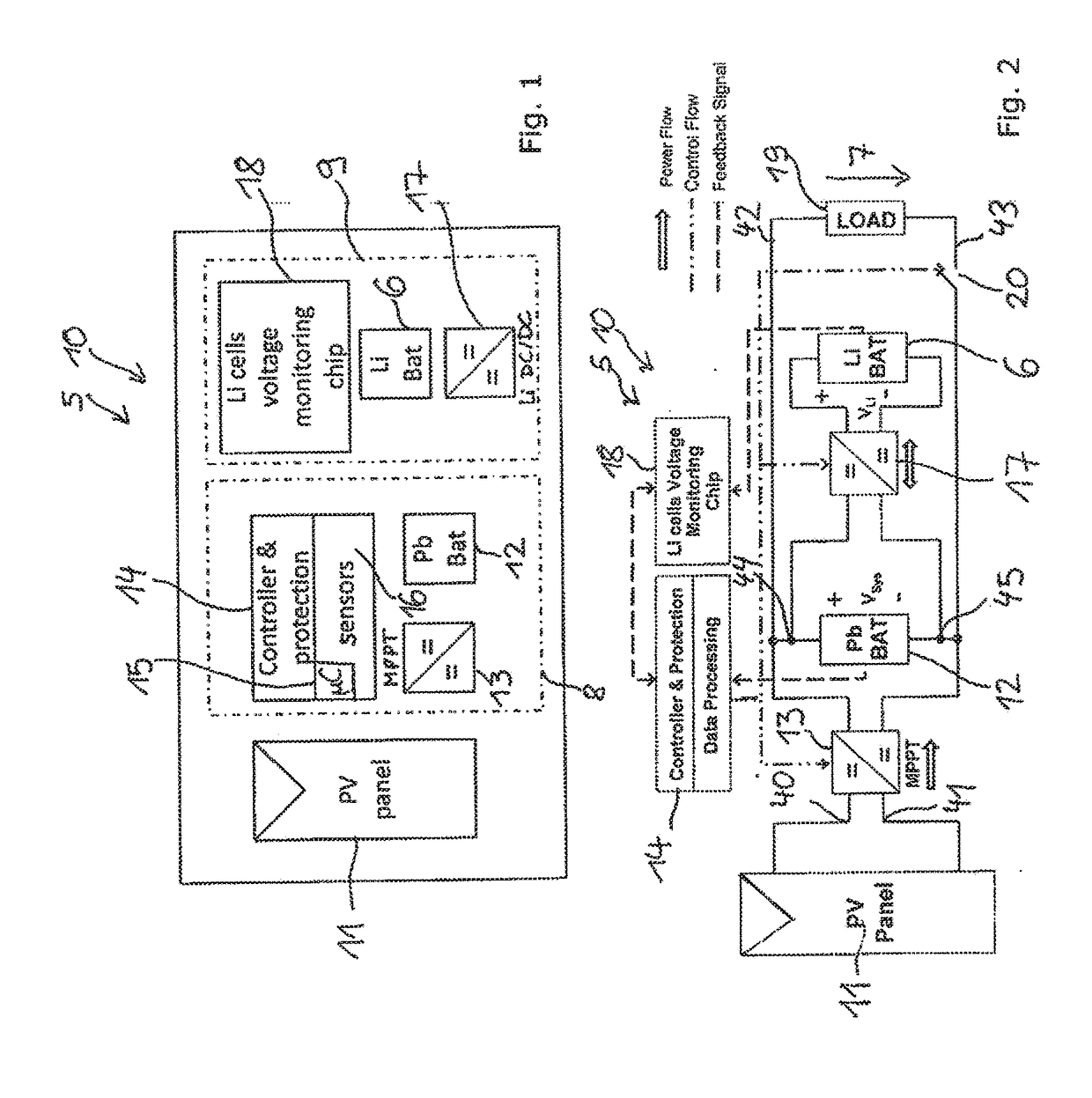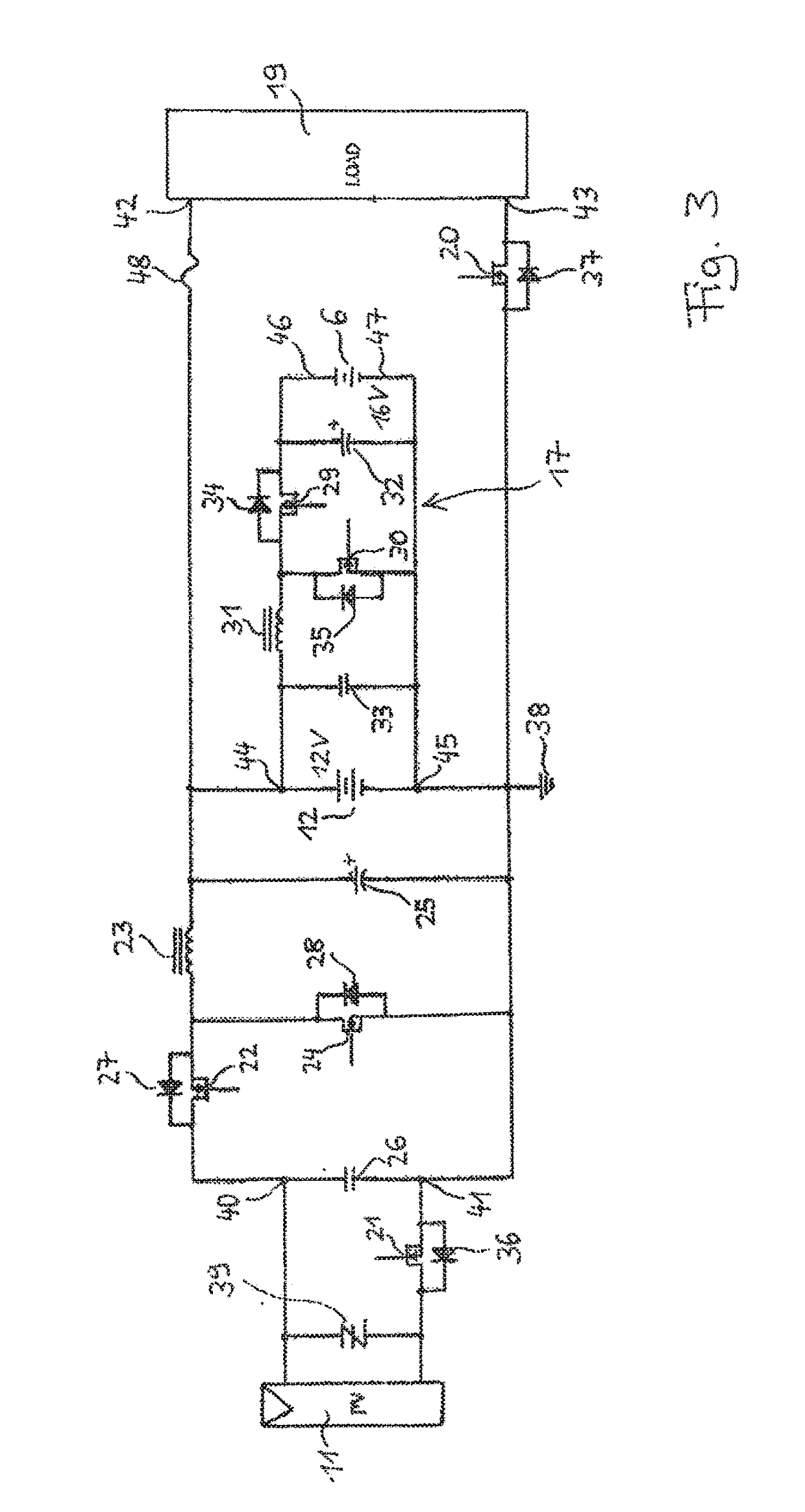Topology and control strategy for hybrid storage systems
- Summary
- Abstract
- Description
- Claims
- Application Information
AI Technical Summary
Benefits of technology
Problems solved by technology
Method used
Image
Examples
Embodiment Construction
[0097]In the following description, details are provided to describe embodiments of the application. It shall be apparent to one skilled in the art, however, that the embodiments may be practiced without such details.
[0098]Some parts of the embodiments are similar. The similar parts may have the same names or similar part numbers. The description of one part also applies by reference to another similar part, where appropriate, thereby reducing repetition of text without limiting the disclosure.
[0099]FIG. 1 shows a layout of a hybrid storage system 5 with a hybrid battery-charging device 10. According to the application, the hybrid storage system 5 comprises at least one battery while a hybrid battery-charging device does not necessarily include the batteries.
[0100]The hybrid storage system 5 comprises a first energy storage subsystem 8 with a photovoltaic panel 11 and a second energy storage subsystem 9. The first energy storage subsystem 8 comprises a lead-acid battery 12, a unidir...
PUM
 Login to View More
Login to View More Abstract
Description
Claims
Application Information
 Login to View More
Login to View More - R&D
- Intellectual Property
- Life Sciences
- Materials
- Tech Scout
- Unparalleled Data Quality
- Higher Quality Content
- 60% Fewer Hallucinations
Browse by: Latest US Patents, China's latest patents, Technical Efficacy Thesaurus, Application Domain, Technology Topic, Popular Technical Reports.
© 2025 PatSnap. All rights reserved.Legal|Privacy policy|Modern Slavery Act Transparency Statement|Sitemap|About US| Contact US: help@patsnap.com



